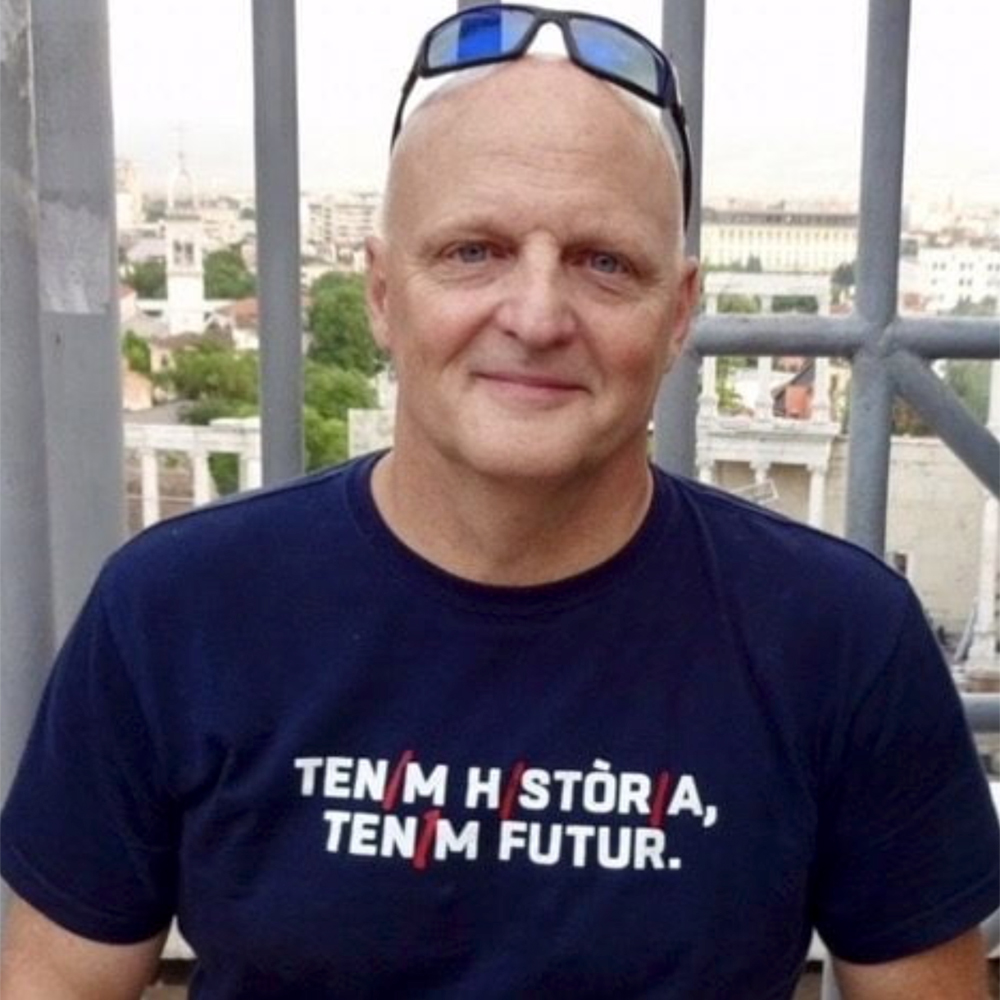[The following is an excerpt from Thomas Harrington’s book, The Treason of the Experts: Covid and the Credentialed Class.]
I will begin with the necessary preventions. I am not an epidemiologist nor do I have any medical expertise. I have, however, spent a great deal of time over the years looking at how deployment of information affects the making of public policy. It is in this vein that I articulate the speculations that follow. I hold no claims to being absolutely correct, or even substantially so. Rather, I am simply seeking to raise some issues that may have been overlooked thus far in the government/media rendering of the Corona crisis.
Three days ago, El País in Madrid, which likes to think of itself as the New York Times of the Spanish-speaking world, ran an article with the following headline: “Young, Healthy and in the ICU: the Risk is There.” The journalist then went on to tell the story of how an apparently healthy 37-year-old Spanish policeman had died the day before. After this, he shared statistics from the prestigious British medical journal The Lancet on the patterns of mortality related to the Coronavirus in Italy, saying:
…the median age of the deceased is 81 and more than two-thirds of these people had diabetes, cardiovascular diseases or were ex-smokers. 14 percent were over 90 years of age, 42 percent were between 80 and 89, 32.4 percent between 70 and 79, 8.4 percent between 60 and 69, and 2.8 percent between 50 and 59. In that country on the other side of the Alps (Italy) the deaths of people under 50 are anecdotal and there are no known deaths of anyone under 30.
Later, he adduced a chart from the Italian Institute of Heath showing the chances of death from Covid-19 in each of the ten-year age blocks from 0 to 100. Here they are:
0-9 years, 0 percent
10-19 years, 0 percent
20-29 years, 0 percent;
30-39 years, 0.1 percent
40-49 years, 0.1 percent
50-59 years 0.6 percent
60-69 years, 2.7 percent
70-79 years, 9.6 percent
80-89 years, 16.65 percent
90+ years, 19 percent
Data is lacking on 3.2 percent of cases.
Assuming that the information cited is correct, we can arrive at some provisional conclusions.
The first and most immediate one is that the writer at El País or the editors who came up with the title for the article are guilty of serious journalistic malpractice. The headline, combined with the anecdote about the 37-year-old fallen policeman, clearly suggests to readers that young and healthy people need to be aware that they too are in significant danger of dying from the Coronavirus. However, the statistics from Italy in no way support this notion.
The second one is that infection per se does not seem to present a serious health risk to the overwhelming majority of people under 60. This, of course, presumes that rates of infection in the 0-60 age cohort are as least as high as in the older group, something that makes a lot of sense when we consider the obviously greater mobility of these people relative to their co-citizens with ages between 60-100.
The third conclusion, which follows from the previous two, would seem to be that the best way to attack the problem is to concentrate the overwhelming focus of social efforts on isolating and treating people in the 60 to 100 age bloc, while also allocating places for those relatively few under 60 who become seriously symptomatic.
What these statistics do not tell us much about, nor am I in any way expert or informed enough about to include in my calculus, is just how many hospital places are required to keep the under-60 mortality statistics as low as they currently are. If the number of hospital places required to treat these people is extremely high, then this could cancel out much of what I have said up until now.
If anyone has any statistics on this, I would appreciate seeing them.
Assuming, however, that the use of hospital spaces by those under 60 is not excessively heavy, it seems licit to ask why the effort to attack the virus seems directed at curbing its spread in the population as a whole rather than on targeting efforts on treating those clearly most at risk of dying from the disease.
Or to put it another way, does it really make sense to bring an entire society to a crashing halt, with the enormous and unforeseen long-term economic and social consequences that this will have, when we know that most of the working population could, it seems, continue to go about their business without any real risk of mortality? Yes, some of these younger people would suffer through some very nasty days in bed, or even spend some time in the hospital, but at least the societal breakdown we are currently experiencing would be avoided.
In 2006, the journalist Ron Suskind wrote a book called The One Percent Doctrine in which he examined Dick Cheney’s outlook on what he and many others like to call the problem of anti-US “terror.” The “one percent doctrine” holds, in short, that if someone high up in the power structure in Washington believes that there is a one-percent chance of some foreign actor wanting to seriously harm the United States’ interests or citizens anywhere in the world, then he/we have the right, if not the duty to eliminate (read: “kill”) that potential actor, or set of potential actors, immediately.
I think that anyone who believes in minimal notions of reciprocity and fair play among individuals and groups can perceive the madness in this posture which essentially says the slightest notion of insecurity as subjectively perceived by the US intelligence community is enough to warrant the destruction of small and large groups of “other people.”
In a country putatively spawned by the Enlightenment, and hence a belief in thorough rational analyses of problems, this turns the lightest of suspicions into a warrant for enacting the gravest type of action a government can take. In so doing, it throws the idea of doing what supposedly pragmatic Americans are best at—rigorous cost-benefit analyses—completely out the window.
And nearly two decades after the adoption of this posture, the death, destruction, financial depletion and overall rise in tensions between the countries of the world generated by this policy prescription are there for all to see.
So if, as suggested, the narcissistic madness of this is plain to see for anyone who takes the time to calmly mentally game the effects of such a policy over the long haul, how is it that we have essentially come to—mostly silently—accept it as normal?
Because the people in power, aided by a compliant media, have gotten very good at plying us with largely decontextualized but emotionally evocative visual images. Why? Because they know, based on studies by their own experts in “perception management,” that such things have a way of dramatically arresting the analytical capabilities of even the most apparently rational people.
Another technique used is that of reducing problems, even the most complicated ones rooted deeply in history and possessing potentially far-reaching and broad social consequences, down to simple personal storylines. In this way, we are further encouraged to blunt any inclination we might have to delve into the complexities of these issues, or the long-term steps we might take to remedy them.
All of which brings us back to the problem of the Coronavirus and the way it is being portrayed in the media, and from there, handled in public policy.
Why, for example, are we constantly being told about the gross numbers of infections? If the Italian statistics are in any way predictive of what we should expect here, why should that be such an obsessive focus of concern?
The same might be said about all the reports about all the young and middle-aged athletes and celebrities who have tested positive for the virus. If we have a very good idea that these people will face no truly serious consequences as a result of the infection, why are we focusing so much on them, and effectively leveraging the supposed danger they find themselves in, as a reason to propagate draconian society-wide policies, with all that such policies imply in terms of spreading out already scarce resources that could be better used to serve the people we know to be facing the greatest danger from this apparent plague?
To be infected with AIDS in the early years of that plague was–at least we were told–to receive a near-certain death sentence. This is far from the case when it comes to the Coronavirus. And yet we are treating “testing positive” for it with the same, if not more solemnity, than we ever did in the case of AIDS.
As I write, I can hear some readers muttering “How would this SOB feel if his son or daughter were one of the few young people to be killed by the virus?” I would, of course, be devastated in a way that I cannot even begin to fathom.
But the fear that something bad might happen to me, my family, or a relatively small group of people—and yes, according to the Italian example, we are talking about a relatively small number of people under fifty who are in any mortal danger—is no way to make policy for national communities.
Sound harsh?
It shouldn’t. With the aid of actuaries, governments and large industries are constantly and quite coldly calculating how much loss or shortening of human life they must concede as inevitable in order to achieve putatively larger and more socially enveloping goals. At the Pentagon, for example, you can be sure people regularly compute how many young soldier lives can and should be sacrificed to achieve goal X or goal Y in support of our supposed national interests.
Curious isn’t it that at a time when our leaders are assiduously employing martial language to garner citizen support in the “war” against the Coronavirus, the rational considerations on the disposability of life they regularly employ and accept as normal are suddenly suspended.
A case of hysteria getting the best of them? Or could it be that they, following Rahm Emanuel’s famously cynical advice, might have decided not to let a serious crisis go to waste?
We can and should debate the true magnitude of what we are going through and whether it merits the radical suspension of our economic and social order.
From where I sit, the best course would seem to be that of focusing energies like a laser on those most likely to suffer and die, while leaving those who, according to the Italian statistics, appear to be largely free of this danger to continue to row the ship of state in this terrible time of devastation and worry.
Join the conversation:

Published under a Creative Commons Attribution 4.0 International License
For reprints, please set the canonical link back to the original Brownstone Institute Article and Author.









